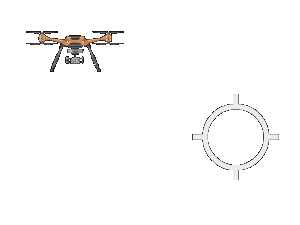IED Threats
We live in a world of technological advancements and groundbreaking ideas and products. IEDs are no exception. With IED threats continuing to grow around the world, there is a need for new technologies to stop adversaries who are taking advantage of improved wireless tech and other developments.
Wi-Fi 6E is one of the latest technological improvements that make IEDs more dangerous. But before we dive into the technical side of things, let’s take a look at how IEDs work.
How does an IED work?
An improvised explosive device (IED) is an unconventional explosive weapon that is made up of five parts:
1. Power supply – The power source provides electricity to the trigger or switch and the detonator. IEDs often have built-in or small batteries as their power supply.
2. Trigger or switch – The trigger sets off the detonator and starts the explosion. The trigger can be through a cell phone, pager, radio, garage door opener, or other devices. The trigger is either timed or set off remotely and some IEDs feature triggers that sense the target in order to activate.
3. Detonator – This is a small device that contains a detonating charge and starts the explosion. A detonator typically uses electrical currents to set off the main charge.
4. Main charge – The main charge is the primary explosive. It produces a high-pressure blast and may propel shrapnel and/or hazardous chemicals.
5. Container – The container holds the parts together and can be anything from soda cans and plastic bags to pressure cookers and gas cylinders.
An IED in general is a simple device and is easy and inexpensive to create. This is one of the main reasons why they continue to be a significant threat in war zones and areas of conflict today.
The connection between Wi-Fi 6E and IEDs
What does Wi-Fi 6E have to do with IEDs and why is it such a threat?
Wi-Fi 6E is the most advanced Wi-Fi available today which enables faster speeds and lower latencies than earlier versions. Wi-Fi 6E (5945-7125 MHz) gives access to the 6GHz band but also provides additional options, quadrupling the number of airwaves leading to an improved experience.
All of this is positive, but when it comes to IEDs, the risk goes up with Wi-Fi 6E. Adversaries can take advantage of the fact that the frequency band isn’t blocked or protected by certain systems, and that it is potentially difficult to block it. This is an issue because counter-IED technology hasn’t caught up with the times yet, and currently only covers up to 6G (without 6E).
With trigger men learning and using the new technology, IEDs are causing a new and stronger threat than ever before. This is why counter-IED tech must catch up.
Counter IED technology for Wi-Fi 6E
In order to stop the new threat of Wi-Fi 6E IEDs, there’s a need to develop new technologies. Until these technologies are developed and integrated, stopping trigger men from detonating these devices is seemingly impossible.
There are three types of jamming used to stop the use of IEDs that can be applied to 6E tech:
1. Active jamming – Continuous broadcast interference across a broad range of frequencies. With this method, you can choose to block the entire frequency band or a narrower range within it.
2. Reactive jamming – This is a threat-oriented technique using a real-time receiver and signal processing to focus jamming strength against specific detected threats. In this method, you can jam known threats while scanning for new ones.
3. Hybrid jamming – A combination of the active and reactive methods. Hybrid jamming is effective against high-power, short-range IEDs as well as low-power, undetected threats.
C-IED solutions by Netline
Netline’s groundbreaking C-IED solutions are at the forefront of innovation including the ability to deal with IEDs working over Wi-Fi 6E. Netline’s C-Guard Systems can identify and cover Wi-Fi 6E and more.
Netline’s C-IED systems are available in vehicular, man-portable, and rapid deployment configurations, adapting themselves to the constantly evolving technology surrounding us. With Netline’s products, organizations can feel confident that the solution in their hand is already a few steps ahead of the latest technological advancements, including Wi-Fi 6E.




